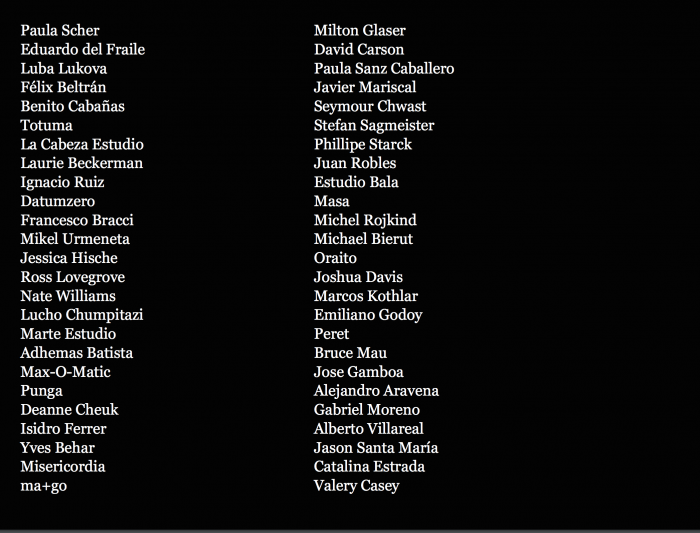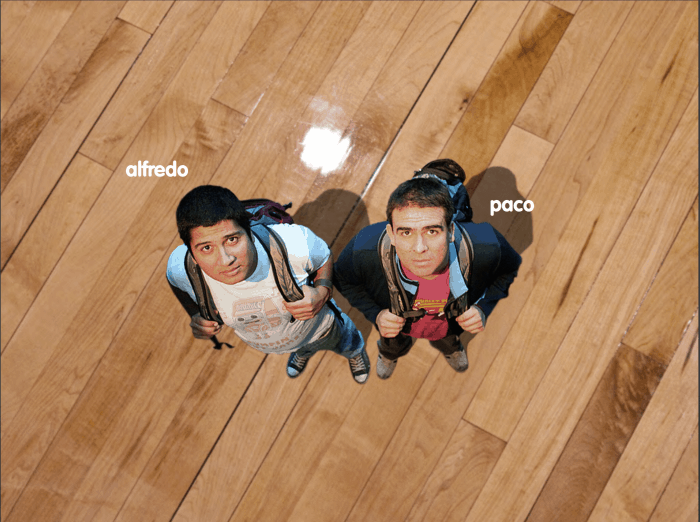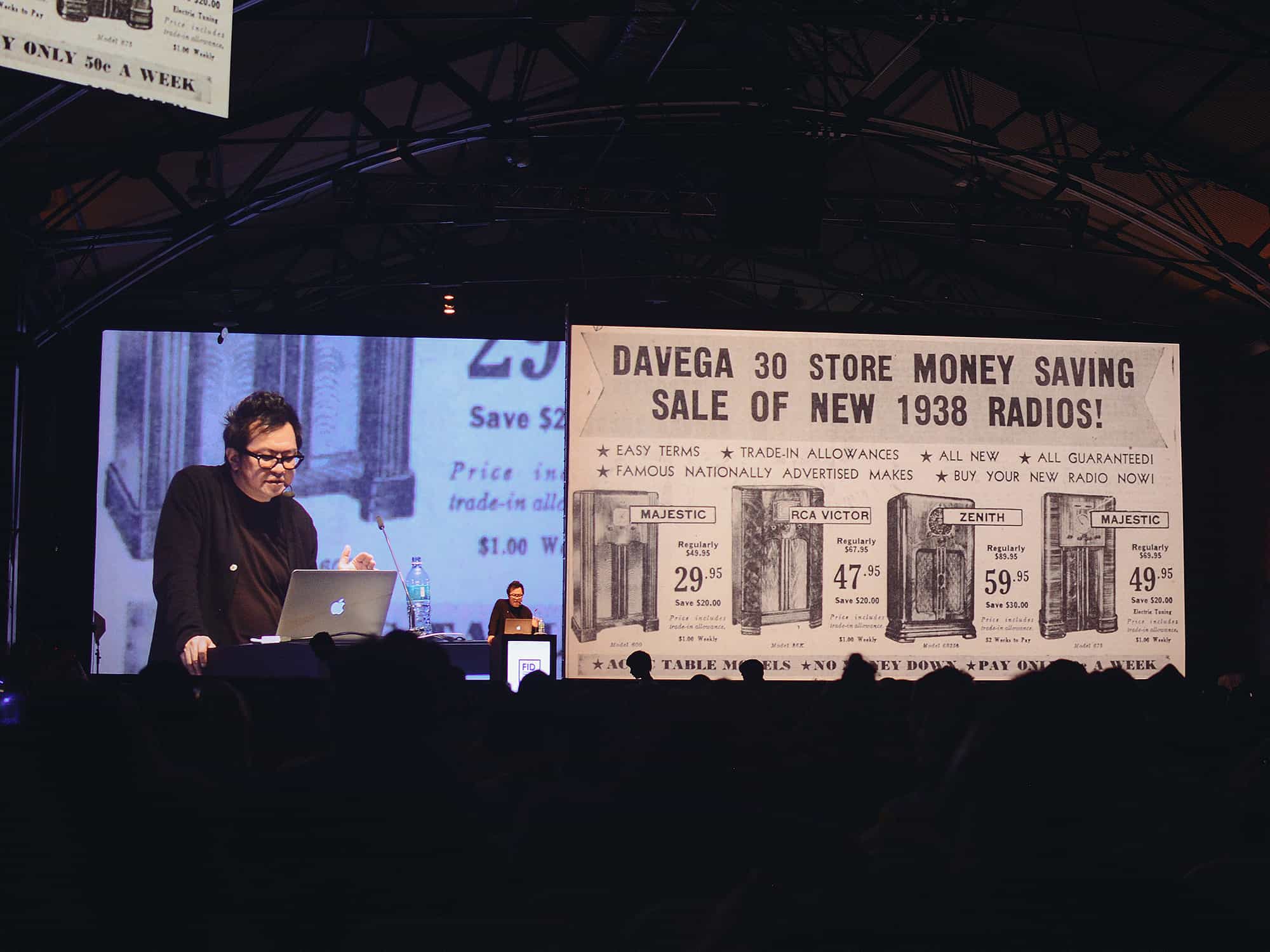Organizing an event, of any sort, can be a tedious process. In 2009, designers Alfredo Enciso and Paco Cervilla began organizing a massive design festival that would make Costa Rica a creative hub: the International Design Festival, or FID.
This year, the FID will host its sixth consecutive edition from March 10-12 at the Antigua Aduana in Barrio Aranjuez. Once again, San José will become the epicenter of design, featuring the world’s best designers, the Espacios FID, a wonderful gastronomic experience and the revitalization of the country’s capital.
These two designers work at the multidisciplinary design company Pupila Studio. At a news conference, Enciso and Cervilla spoke about the organization and the implications that a massive event such as the FID entails, in seven acts.
Act I: Alfredo has an idea (December 2009)
The idea for a huge event that would place Costa Rica on the map as a creative hub came from an afternoon of beers between two friends. As simple as that, Enciso and Paco began working on their master plan.
“One day I went to Paco’s house to drink some beers and told him: ‘Let’s do a design festival.’ Off course, Paco’s response was very simple, a facial expression of disbelief. We got excited about the idea, told ourselves to carry out the festival and presented our idea to the people we respected and who we thought were doing interesting things in the Costa Rican creative area,” Enciso recalled.

Act II: Pupila Lee Sid Lee (February 2010)
Organizing the FID meant breaking barriers and providing Costa Rica with an innovative event. This implied facing the fact that it somehow seemed impossible because of a lack of events regarding design.
“We wanted to create a multidisciplinary and accessible festival in Costa Rica. When we asked certain people who had experience regarding the organization of these events, they always told us the same thing: It was impossible.”
However, Enciso and Cervilla did not allow themselves to be discouraged by people’s comments, and they continued with the process.
“We got a bit bummed, but one day we received a Peruvian design magazine at the studio that had an interview with designer Helen Godin. It said: ‘Celebrating great design and sharing it with the community is the most important part for a city to transform itself into a creative city.’ That inspired us a lot. We decided to continue with the project and wouldn’t tell anyone about it,” Cervilla told the audience, referring to the festival’s source of inspiration.
After several difficulties, Enciso and Cervilla continued with the most exciting part: searching for featured guests.
“The nicest part about the FID is looking for the guests. We call it Santa’s list because it’s about the designers we want to invite. Imagine two inexperienced designers organizing an event! The only event we had ever organized was a bachelor’s party and it came out wrong. After speaking for 15 minutes we decided it was very easy – invite the guest speakers, get the sponsors and permits, sell the tickets and it was done,” Enciso said.


Act III: Becoming friends with receptionists (March 2010)
This part involves the use of people skills. Enciso and Cervilla became experts in this area after dealing with a large number of receptionists. Convincing them and becoming their friends are the key to success to get direct contact with these huge globally known designers.
“You meet these designers’ secretaries, but never get to meet the designers personally. Our communication was always the same: We sent them an email, they answered us, they asked us to call them, we called them, and from then on it was through email.
“Usually, we’d use the phone call to make them fall in love with Costa Rica and it’s natural beauty. We’d tell them it’s summer here and they’re freezing to death during winter at their homes,” Enciso said.

However, not all designers had the same response towards Enciso and Cervilla. Some made the task more difficult to achieve. The best example for this is Paula Scher, one of the most important graphic designers in the world.
“We were given her email, wrote to her and never got an answer. We then began calling Pentagram, the studio where she works. The receptionist answered our call. We explained to her what the FID was about and that we’d like to personally speak to Paula. Supposedly, they transferred the call to her, but she didn’t answer. We decided to call Pentagram every two days to speak with her. It reached a point in which we became friends with the secretary.
“After a month of constantly speaking with this woman we asked her why Paula wasn’t answering us. She told us it was because a lot of people called and told them tons of stories in order to show Paula their portfolio. She then passed us on to Janice, who wrote to Eva [Paula’s personal assistant]. That was our whole communication process for the FID’s first edition, until Eva called us to confirm Paula’s participation,” Enciso explained.
Act IV: S&P – Sponsors and Permits (August 2010)
In order to organize a massive event of any kind, you must get sponsors to help finance the event and the legal permits for the use of certain places that belong to the public domain. This was another issue that Enciso and Cervilla faced due to the government’s slow movement on getting papers on time and correctly.
“We were three designers, Alfredo, my wife, who is a textile designer, and me. We had no experience, no money, nothing. … So we organized meetings all the time in order to put pressure on to at least be heard for five minutes. Alfredo and I traveled by bus and with our backpacks. It was exhausting, but we were convinced that what we were doing might have an interesting result.
“The objectives we had set during that afternoon of beers are still the same today: making Costa Rica a creative hub on a global level. We also wanted to inspire a creative hegemonic career on a regional level, providing a networking space, becoming multidisciplinary. The idea was that the architect met the graphic designer, the graphic designer met with the web designer, and the web designer with the 3D animator. These designers would also meet the entrepreneurs to get help to initiate their own businesses,” Cervilla explained.


Asking for permits became a very important part of the whole process. During that time, Enciso and Cervilla hosted the FID at the National Gymnasium in La Sabana, west of San José. It’s here that things got intense.
“During this time, my wife, who is also the FID’s president, was pregnant. That was very significant. We were in the middle of the process of this monstrous project, fighting against all forecasts, and I was going to become a dad!
“We then went to Cristo Rey for the permits. It’s a very complex place and it’s in front of the jail. I went there in the morning and asked what I had to do. I knocked on a door and found a man sleeping there at 10 a.m. I woke him up and showed him what we’re doing. He answered me in a very bad manner, asking when it was. I told him it was in March, and he said there was a lot of time until March. But I wanted to do this with time.
“Since I had awakened this man from his 10 a.m. nap during working hours, he then moved to search for some papers and told me to make some copies. I did so and began the process for the permits,” Cervilla explained.
The series of unfortunate events doesn’t end here.
“On Dec. 16, Monse [his wife] told Alfredo and me that the papers we were processing didn’t work because they had given us the wrong ones. Each of these permits had a requirement, which had more requirements. There are things that contradict themselves there. It’s crazy. I wanted to abort the mission, but Alfredo and Monse said to keep on,” Cervilla said.

Act V: Door to door (January 2011)
Spreading the rumor about FID was the way to get people interested at the time. Word of mouth from Enciso and Cervilla would become the manner in which people would get acquainted with the idea of making San José a design epicenter.
“On Jan. 20 we put the tickets on sale. The day before, someone had bought the first ticket. We thought it would sell out rapidly if someone had bought a ticket in advance. The event always takes place on a Thursday, Friday and Saturday, and 15 days before the event we had sold only 100 tickets. We needed to sell 1,000 in order to be profitable. We went to design and architecture universities, … everything we could think of to sell those tickets and explain what the festival was about,” Enciso recalled.
Enciso and Cervilla managed to attract people to their presentation at a university when no one showed up.
“We had prepared a conference for a university. No one showed up. It turns out that that day the students had no classes. We had to tell someone about this, so we gave the conference to a cleaning lady and a girl who studied medicine or something like that. This girl got excited, told her friends and they went nuts. We didn’t know how to give a conference, so Alfredo just agreed to what I said,” Cervilla said.
Act VI: Taking the ring (March 2011)
At this point, Enciso and Cervilla didn’t know what time was. They somehow managed to bend time and accomplish all of their objectives even though everything was upside down. The FID was becoming a reality after a long journey.

“We realized that our strategic plan had changed because there were a lot of intermediary steps in between. As the festival neared, it became more stressful. The FID began on a Thursday, and on Monday of that week we had handed over the last papers to obtain the municipal license,” Alfredo explained.
“Since Monse was pregnant we always went first in line. When I got to the municipality to present the papers the guy told me it was all wrong. He could not grant us the permits because the INS [the National Security Institute] had written it was at Cristo Rey when it was at the National Gymnasium.
“I didn’t even call Alfredo or Monse. I just left and went to the INS. I was shouting all over the place. It turns out that the people at INS had lost the folder with the festival’s record. That was on Monday. The festival was on Thursday and we didn’t have the permits. The idea of placing Costa Rica as a creative hub didn’t matter to me by then. The only thing I wanted was to carry out the event, avoid a cardiac disease, and sleep,” Cervilla said.
Act VII: D-Day (March 2011-2012-2013-2014)
After an arduous work process, the results paid off, and the FID became known for what it is today. Enciso and Cervilla changed the festival’s location to its current one at the Antigua Aduana. They measure the festival by four different factors: It’s an urban activator; it helps the country’s economy; it’s accessible education; and it gets a lot of media coverage, both nationally and internationally.

“It works as an urban activator because the cultural agenda has expanded during those three days. We’ve created alliances with museums, galleries, bars and restaurants. The Art City Tour has a special date during those days. Carpe Chepe carries out its tours through architectonic places and bars in the city. The Museum of Contemporary Art and Design (MADC) is another of our allies, as well as the Paseo Gastronómico La Luz in Barrio Escalante,” Cervilla said.
See also: International Design Festival announce 9 of its featured guests for 2016

The FID’s audience has grown significantly, ranging from 1,400 to 2,100 attendants. Its prices, which range from $80 to $140, also make it accessible. While festivals such as C2 Commerce + Creativité (Canada) and Gravity Free (San Francisco, USA) cost $3,600 and $1,500, respectively, the FID offers the same quality guests at a much lower price.


Organizing a massive event such as the FID is something quite difficult due to the great quantities of permits needed to carry out the festival. Enciso and Cervilla have managed, in a great manner, to place Costa Rica as a creative hub since they ventured into this. There’s no reason to miss out on one of the best design events. Tickets are on sale at the stores deaquí y deallá, Saúl E. Méndez, and at the FID’s webpage.







